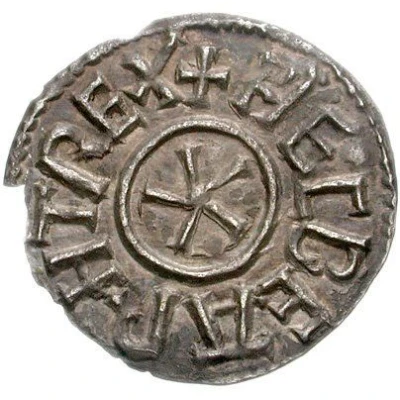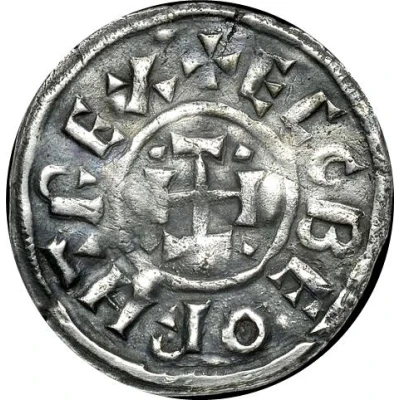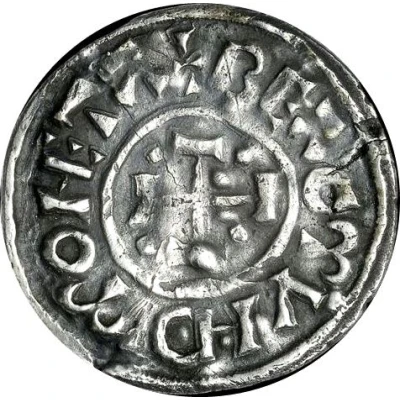


© Classical Numismatic Group, Inc.
Penny - Ecgberht Group III; Canterbury
| Silver | 1.32 g | 20 mm |
| Issuer | Kingdom of Wessex (Kingdoms of British Isles and Frisia) |
|---|---|
| Issuing entity | Monneyer Bosel |
| King | Ecgberht (802-839) |
| Type | Standard circulation coin |
| Years | 802-839 |
| Value | 1 Penny (1⁄240) |
| Currency | Pound |
| Composition | Silver |
| Weight | 1.32 g |
| Diameter | 20 mm |
| Shape | Round (irregular) |
| Technique | Hammered |
| Orientation | Variable alignment ↺ |
| Demonetized | Yes |
| Updated | 2024-10-09 |
| Numista | N#102970 |
|---|---|
| Rarity index | 97% |
Reverse
Mint monogram within inner circle, moneyer's name around.
Script: Latin
Lettering:
+ BOSEL MONETV
DOROB C
Unabridged legend: Dorobernia Civitas
Translation:
Bosel, moneyer.
City of Canterbury.
Comment
Anglo-Saxon Middle Period (c.780-973), Kings of Wessex (786-924), Ecgberht (802-839), Group III (c.828-839), Canterbury mint.King of Wessex only, 802-825, then also of Kent, Sussex, Surrey, Essex and East Anglia, 825-839, and of Mercia also, 829-830.
Interesting fact
One interesting fact about the Penny - Ecgberht (Group III; Canterbury) (802-839) from Kingdom of Wessex (Kingdoms of British Isles and Frisia) made of Silver weighing 1.32 g is that it features a unique design that sets it apart from other coins of its time. The coin has a distinctive "cross-and-lobes" design on the reverse side, which was a hallmark of coins minted during Ecgberht's reign. This design features a central cross surrounded by four lobes, giving the coin a distinctive and recognizable shape. This design was used to distinguish Ecgberht's coins from those of other kingdoms and to showcase the artistic skill of the mint workers.



